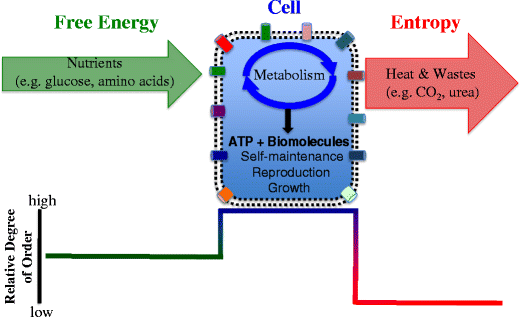
reduction of dissolved oxygen) and a physiological change in fish and other animals. This changes the temperature of the receiving water, which causes both a physical change (e.g. It is usually captured by water which is then released into a lake or the sea. The heat expelled from a cycle must go somewhere.One practice that can be used with a thermal power plant is cogeneration, which is where the excess heat expelled is used to heat either an industrial process or buildings.

These do not convert heat to work (and therefore do not run in a cycle) and so are not limited by the Carnot efficiency. Most of these (but not all) belong to what are called direct energy conversions.
ACCORDING TO THE SECOND LAW OF THERMODYNAMICS FULL
The human body is only 25% efficient, which is why a room full of people is warmer than a empty room - all those people are giving off heat. Let us at the efficiencies of some other processes: We can see the effects of efficiency by looking at the conversion losses (the gray bar), which dwarfs the other outputs. It shows input resources and output uses of electricity, where the width of the bars are proportional to the amount of energy. Units are in TWh (1TWh = 1 billion kWh)įigure 2 is an electricity flow chart for the United Kingdom in the year 2007. Electricity flow chart for the United Kingdom in the year 2007. This is called waste heat.Įfficiency Efficiency, η The ratio of the net work to the heat input.įigure 3. Since all of the heat entering a heat engine is not converted to work there must be some leftover heat. In doing so we will also learn some things about energy in general. So the second law should give some insight into heat engines. The second law of thermodynamics says No system can be developed which completely converts heat to work. The steam leaving the turbine is then condensed back to water (releasing heat) and then pumped back to the boiler.

The shaft is connected to a dynamo to generate electricity. The turbine consists of blade attached to a shaft. The steam is then used to drive a turbine. The boiler can be heated by coal, oil, natural gas, nuclear, solar, biomass, or geothermal). Water is heated in the boiler to create steam. A fluid known as the working fluid is used, most commonly water. See text for a descriptionįigure 1 shows a typical heat engine used for power generation. Drawing of a simple electric power plant.


 0 kommentar(er)
0 kommentar(er)
